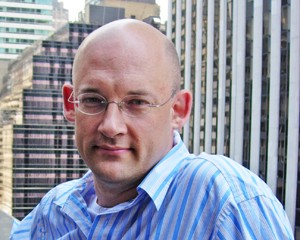Clay Shirky teaches at New York University where he has a joint appointment as Arts Professor at the graduate Interactive Telecommunications Program in the Tisch School of the Arts, and as a Distinguished Writer in Residence at the Arthur L. Carter Journalism Institute in the Faculty of Arts and Science. He is best known for his work with the “social and cultural effects of the internet and mobile phones, particularly where they allow for amateur access to the public sphere and easy coordination for group action.” Shirky is the author of two recent books on social media: Here Comes Everybody: The Power of Organizing Without Organizations (2008) and Cognitive Surplus: How Technology Makes Consumers into Collaborators (2010). Additionally, he has been writing about the internet since 1996. His work includes regular columns in Business 2.0 and FEED, and his writings have appeared in the New York Times, the Wall Street Journal, the Harvard Business Review, Wired, and Computerworld.
Book Basics
Currently, the world’s educated population has in excess of one trillion hours of free time each year. For many years, television has been the primary use of this free time, accounting for an average of over twenty hours a week per person. A shift is occurring; the old media that was created by professionals for consumption by others is being replaced by media that everyone can produce, share and, consume. For the first time in human history, people live in a “World where being part of a globally interconnected group is the normal case for most citizens” (p.24).
Cognitive Surplus: How Technology Makes Consumers into Collaborators is a must read for nonprofit leaders and anyone interested in understanding how technology has the potential to change the world for good on a scale far beyond any scale used to measure previous collaborative ventures for bettering humanity via the use of volunteers. Less of a “how to” and more of a “what could be” book, Cognitive Surplus empowers readers to imagine a different kind of world in which people intentionally and strategically partner with others around shared interests. To facilitate this type of new thinking, Shirky explores the overall motive, means and opportunity related to our current cognitive surplus alongside stories of how groups have already successfully leveraged a portion of it for good.
So What?
While Shirky shares many examples, he wisely avoids suggesting any one current tool or technology is the means or even a primary means for utilizing the cognitive surplus. In short, his big picture summary of our present situation:
The technology will continue to improve, and the population will continue to grow, but change in the direction of more participation has already happened. What matters most now is our imagination. The opportunity before us, individually and collectively, is enormous; what we do with it will be determined largely by how well we are able to imagine and reward public creativity, participation, and sharing (p.212).
For those who follow the way of Jesus:
- Does the idea of leveraging the cognitive surplus for the betterment of the world and all of its inhabitants (human and otherwise) resonate with Jesus’ teachings? If so, how so? If not, what sort of tension arises when comparing the two?
- How might your congregation view specific projects differently if the thinking shifted from scarcity to abundance because of an intentional effort to capture a part of the cognitive surplus rather than merely to seek volunteers from within a relatively small group of people within the congregation?
Clay Shirky. Cognitive Surplus: How Technology Makes Consumers into Collaborators. (Penguin Books, 2010). ISBN: 9780143119586.
